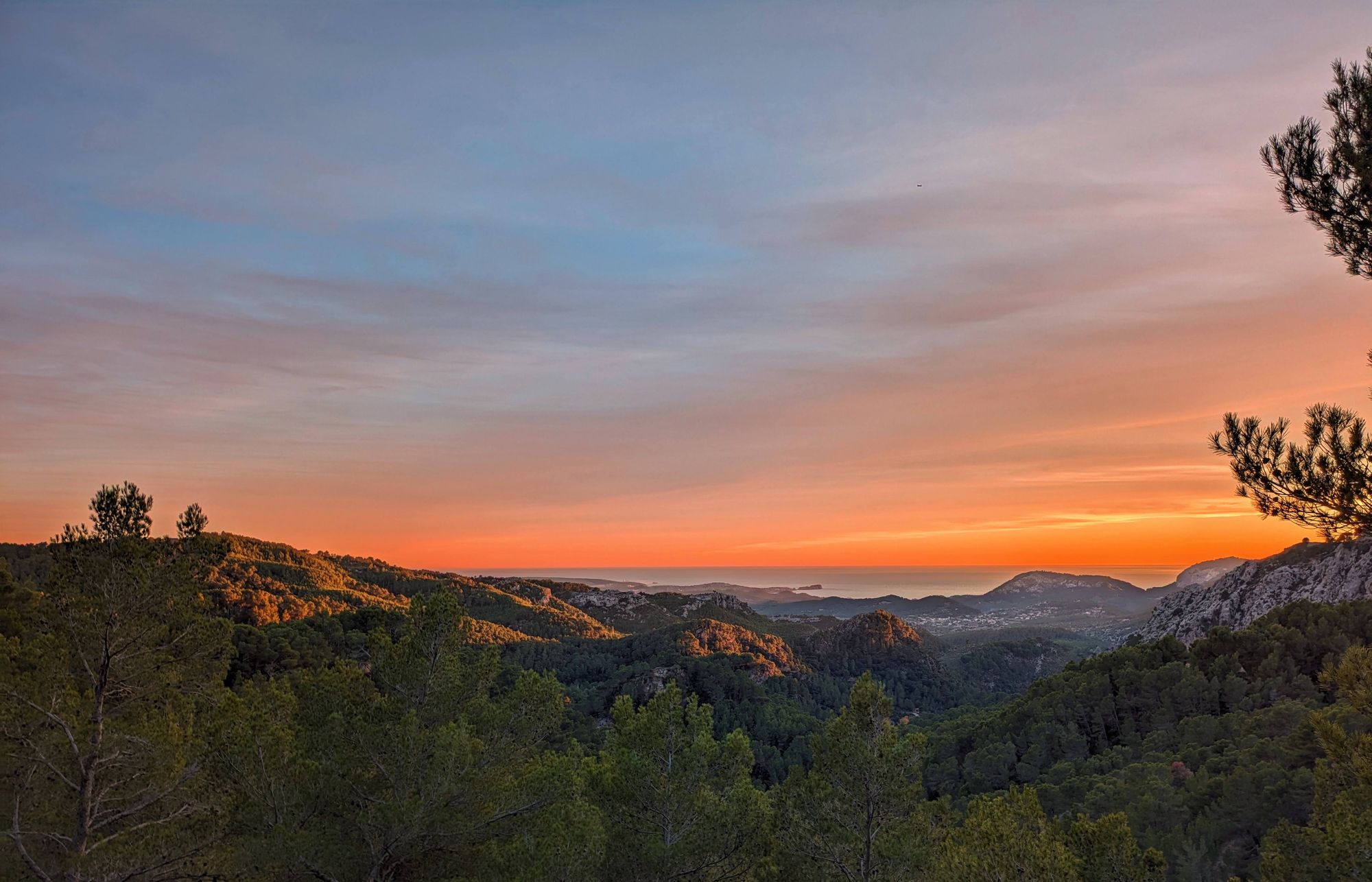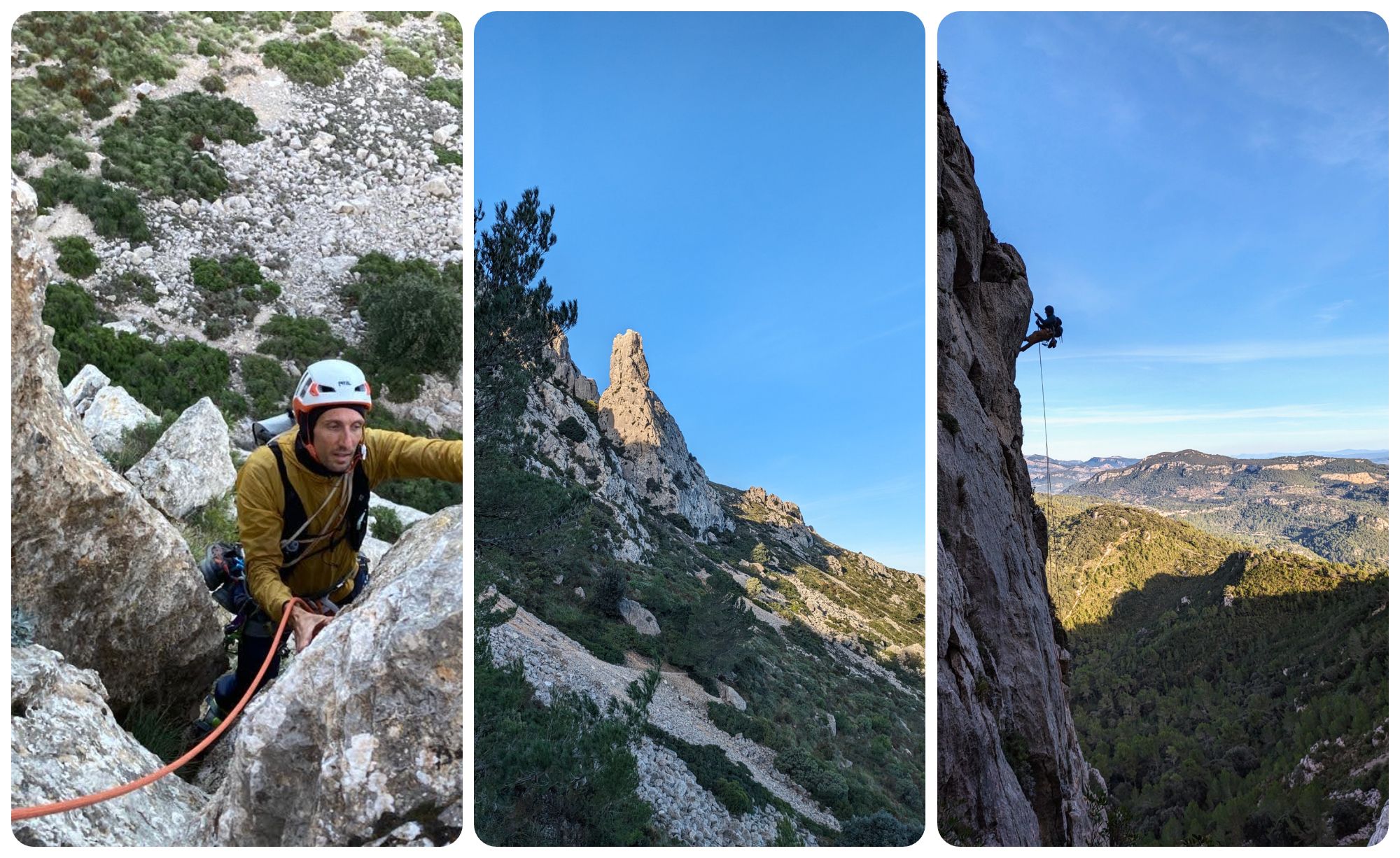Quick info
- Very aesthetic rock tower in a beautiful mountainous setting.
- 3 pitches / 105 meters
- 5a / 5c / 4b
- Trad protection / only some fixed gear at belays and rappel stations
- Descent via rappel two short or one longer rappel
- Additional variantes and routes on the same tower (up to 5 additional pitches)
General
Most of the higher peaks of the Tramuntana are situated around Puig Major and Massanella in the northern part of the range. However one the most „mountainey“ looking peaks of the island is further to the South - the Puig de Galatzo. It is just over 1000 meters high, boasts 700 meters of prominence and forms a fairly even pyramid. Its summit does provide a perfect 360 degree panorama of the Tramuntana mountains, the sea and the surrounding towns. It’s no wonder that many locals and tourists do take the hiking route up to the top to enjoy these views.
The Agulla de Forcada rock spire sits right below the summit on the east face and rises about 100 meters on the high (northern) side and only about 40 meters on the other side towards the main peak of Galatzo. When looking at the tower from the North it becomes evident how it got its other name „The Bishop“ as it resembles the bishop chess piece with its two summits separated by a sharp cut. Our route called „Vespa“ starts at the very bottom of the higher side and after two pitches joins the normal route for the final push to the summit.
The beautiful setting of this area makes the already high quality and adventurous climbing particularly special. With the option to tag on the secondary summit and the two additional bolted lines on the East face the longish approach is definitely worthwhile.
Logistics

There are two possible parking spots to start the approach hike to both El Bispe and the Galatzo east face (which is also described in this guide). Either park in the town of Puigpunyent (the long version) or drive up the very small road starting just outside Puigpunyent (called Cami des Pla des Delme) to the Font des Pi (note that this road is partly broken, small and steep - however the approach is much shorter. You can also drive up part of the road hike the rest of the way).
Approach
For the approach from Puigpunyent follow the Cami Vell d´Estellencs to the Son Fortesa mansion. The road turns into a hiking trail here. Continue on for 3 kilometers until a ruined finca. Shortly after, turn left onto a trail towards the south east. After another two kilometers take a small steep trail up unto the coll with a large observation tower (about 6km and 600 meters of climbing until here). This is where the short approach meets the long one.
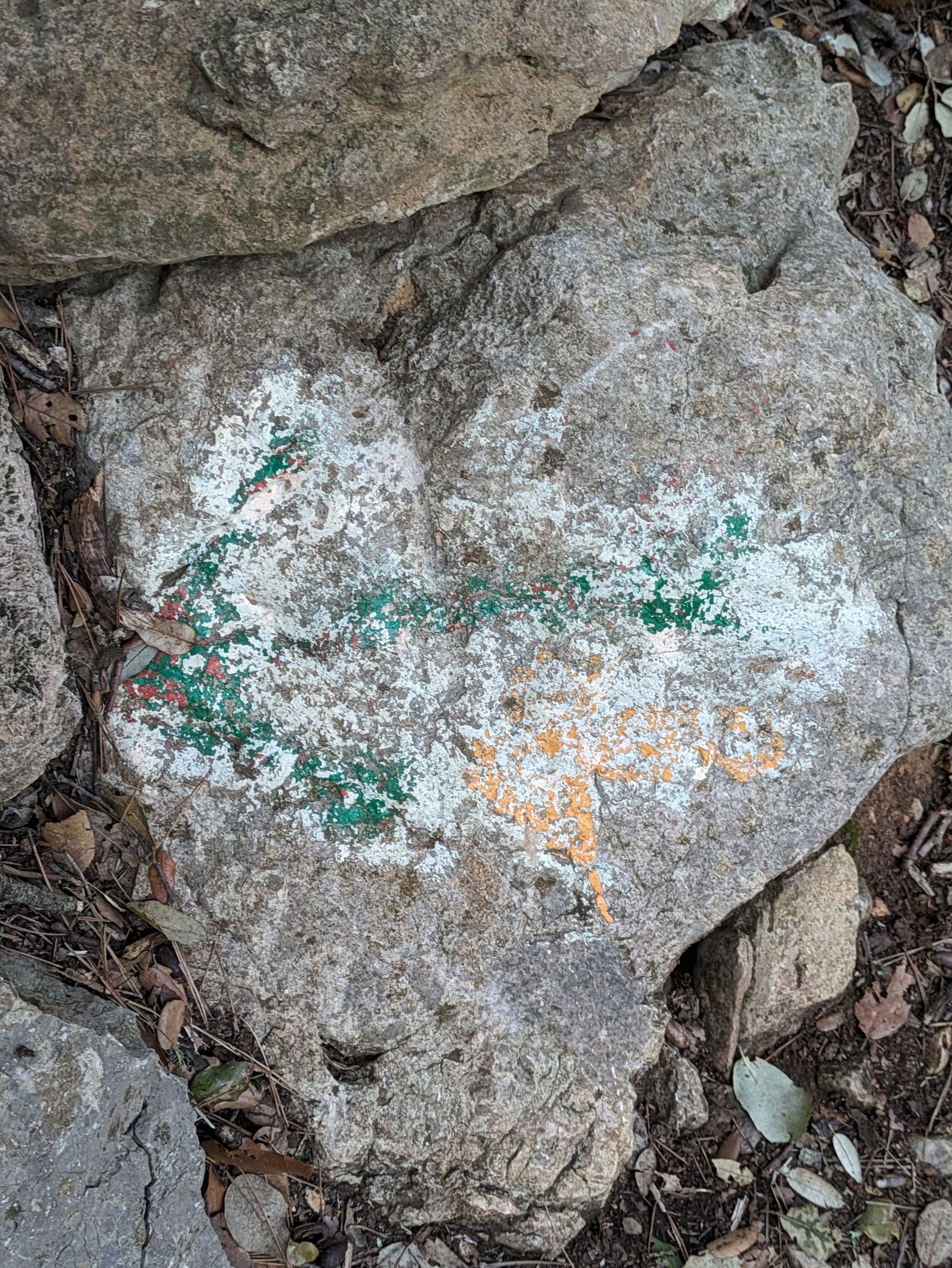
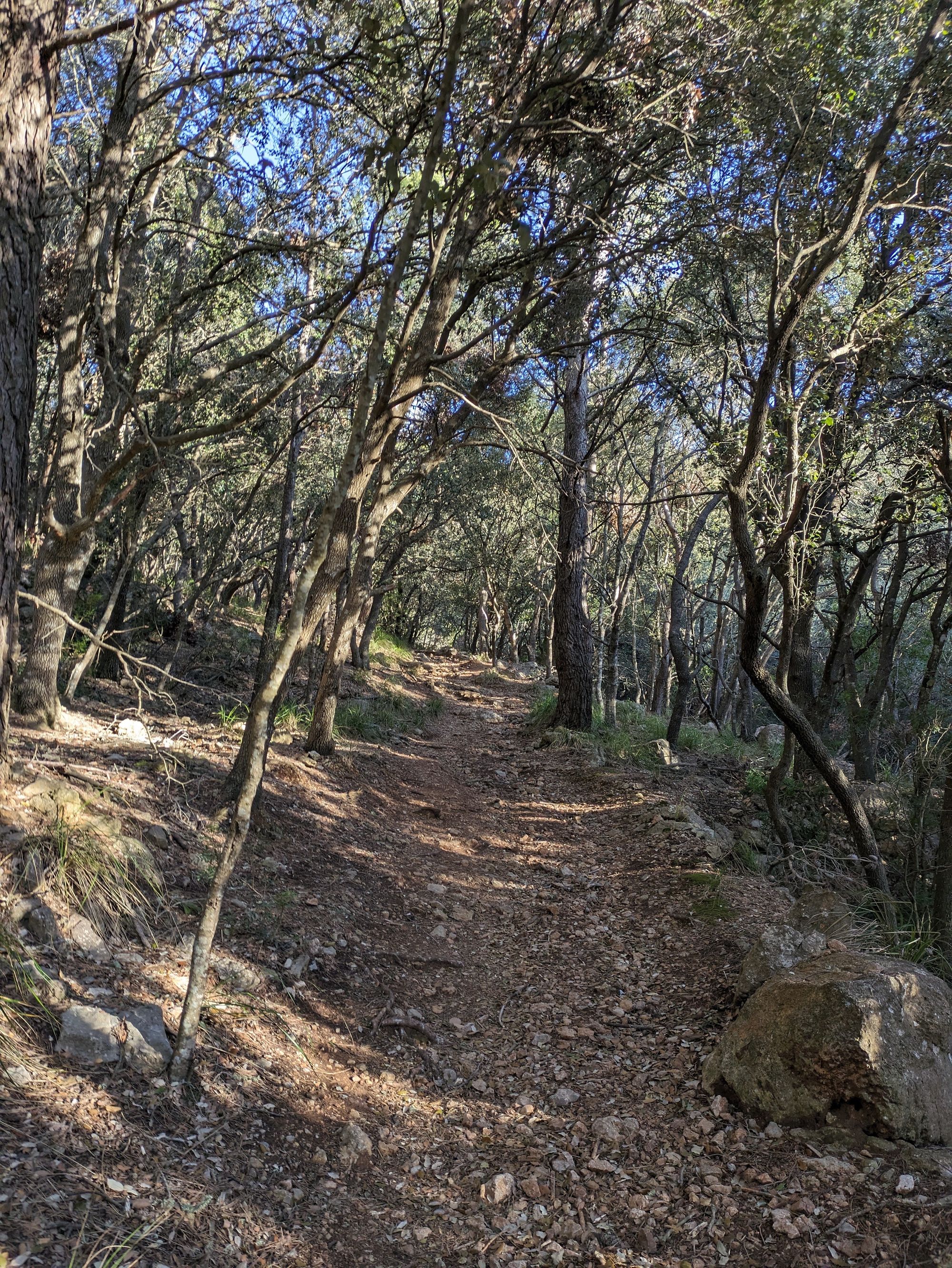
For the shorter approach start at the Font des Pi and take the hiking trail north towards the observation tower for 700 meters and 130 meters up (make sure to catch the left turn shortly after the Font de Pi marked by orange and green spray paint on a stone).
To reach El Bispe, continue on the main hiking trail up towards Galatzo and over the rocky flank until you are right under the start of the route.
After rappelling off the main summit scramble down via scree and vegetation to the approach trail. If you climbed the east face routes make your way around the tower to find the down scramble. From here the descend is a return on the approach route.
Technical information
- Trad line with some older fixed gear (threads and pitons at the belays and some pitons as intermediate protection).
- Three pitches for the main route „Vespa“ / 105 meters to the main summit
- 5a / 5c / 4b
- Fixed gear at the rappel descent
- Gear: 50 meter single rope (two rappels necessary for the descent) or one 70 meter for a single rappel, 6-8 quick draws, small to medium cams, slings
- Almost no sun on the North Face. The area is prone to strong winds and can catch the clouds coming up from the sea easily.
- Secondary summit via alternative third pitch at 5a
- Two additional two pitch lines on the east face at 5c/A0 and 6b
Climbing and pitches
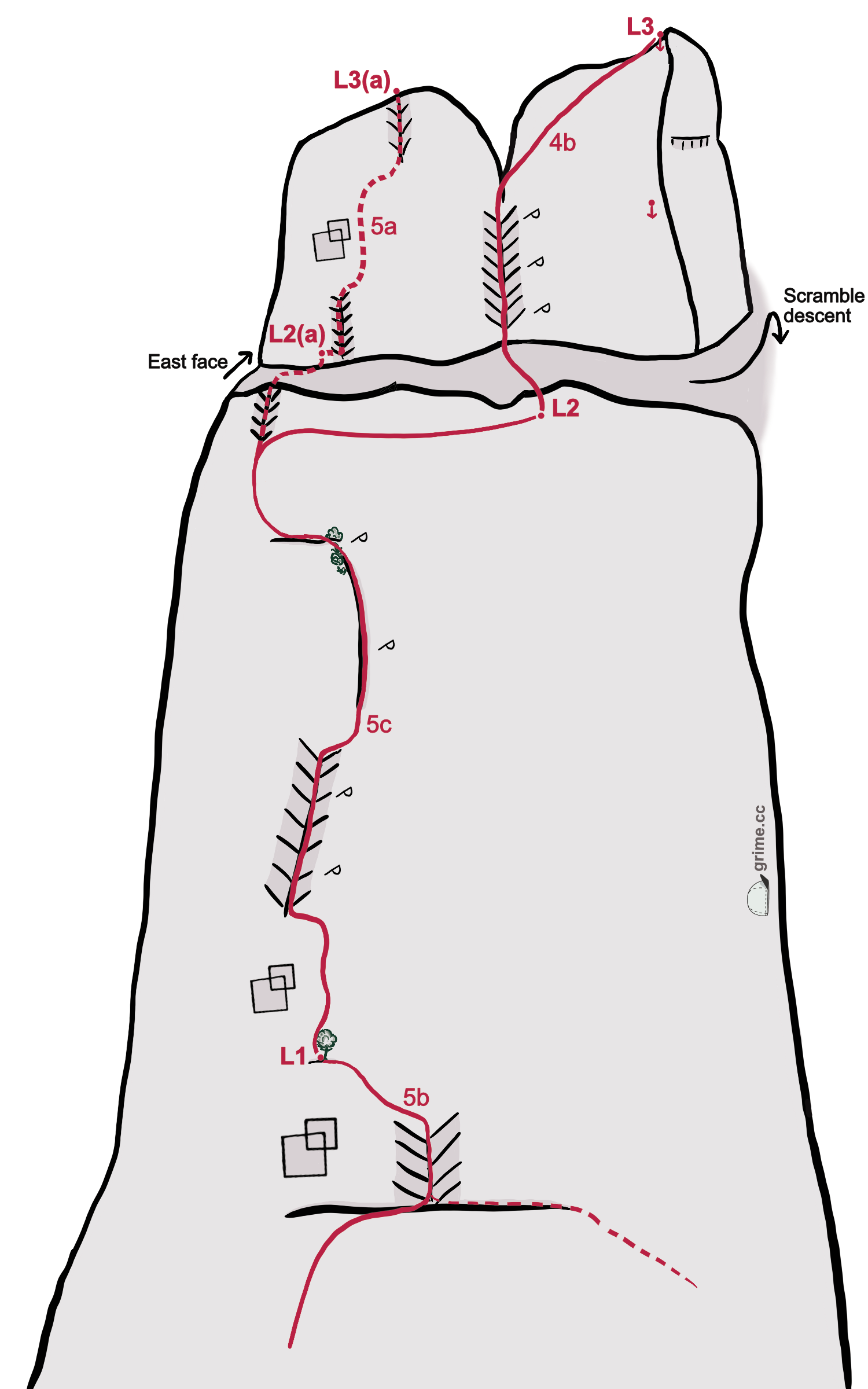
Varied climbing on sometimes loose rock that follows the most logical line making good use of corners to avoid the more blank slab sections. The North Face is slick and vegetated in places. The climbing is made easier and more secure by solid crack technique (this might be the most crack focused route on the island).
Be very mindful of rockfall on the north face as the popular hiking route is right below!
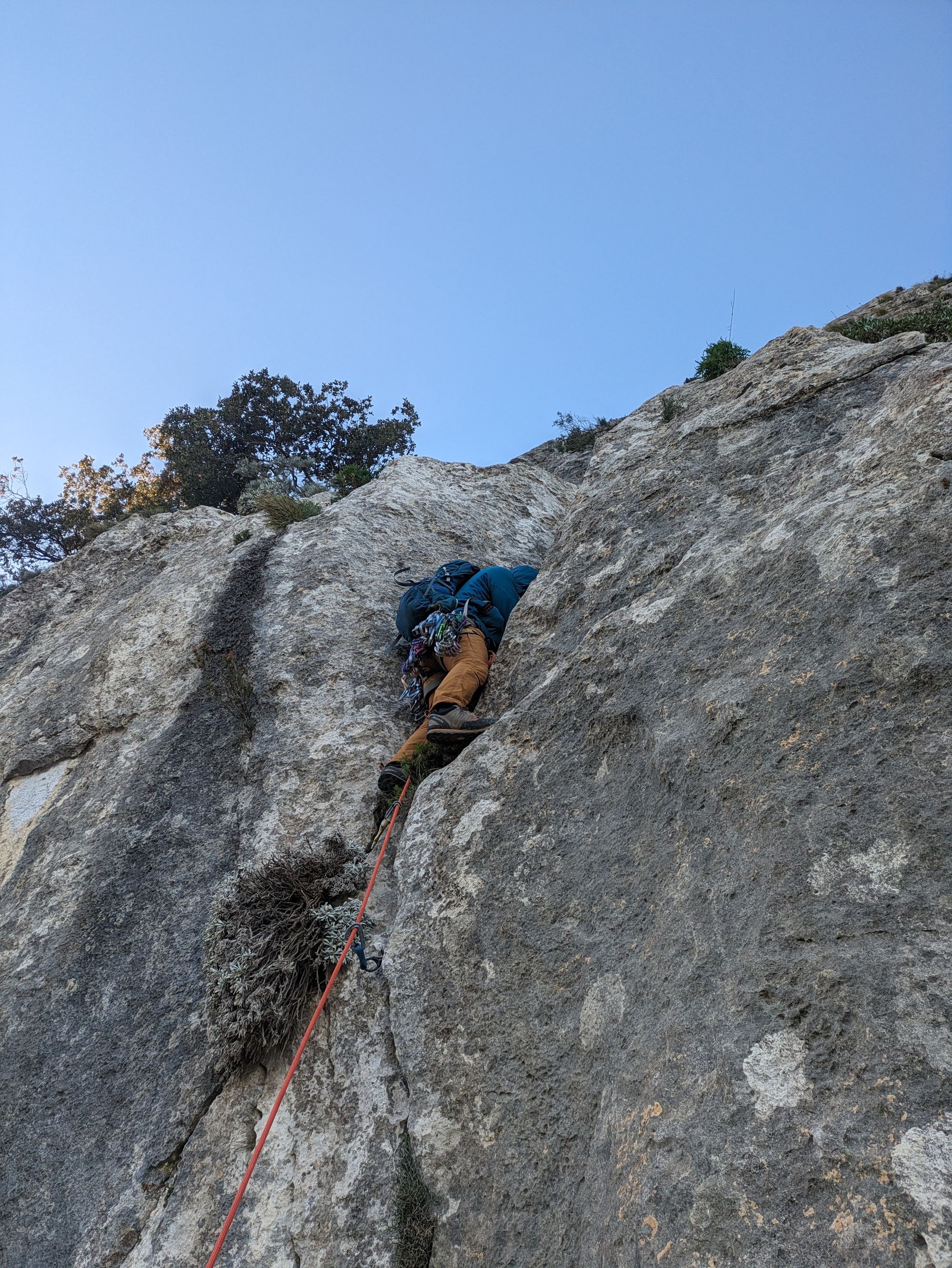
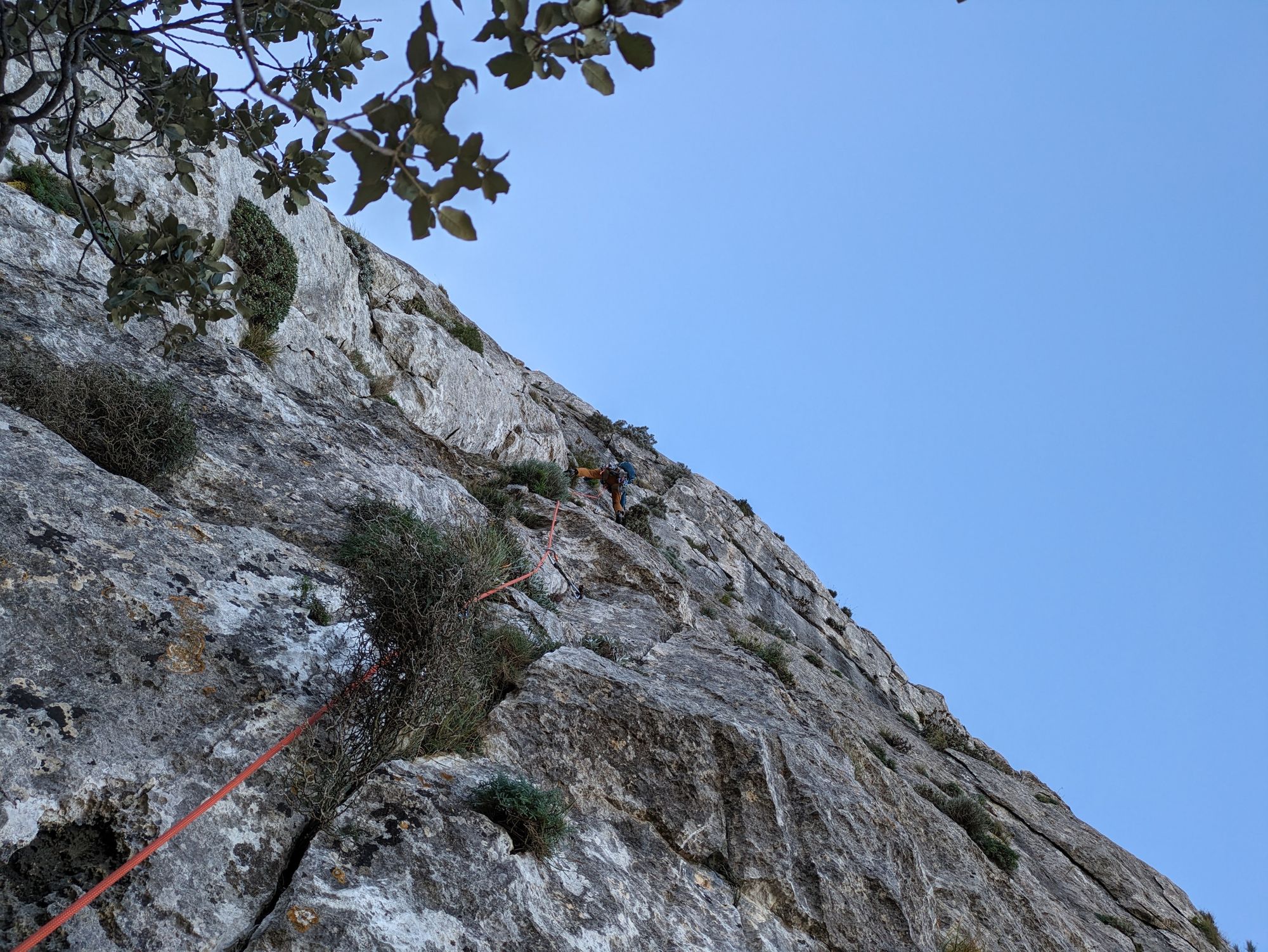
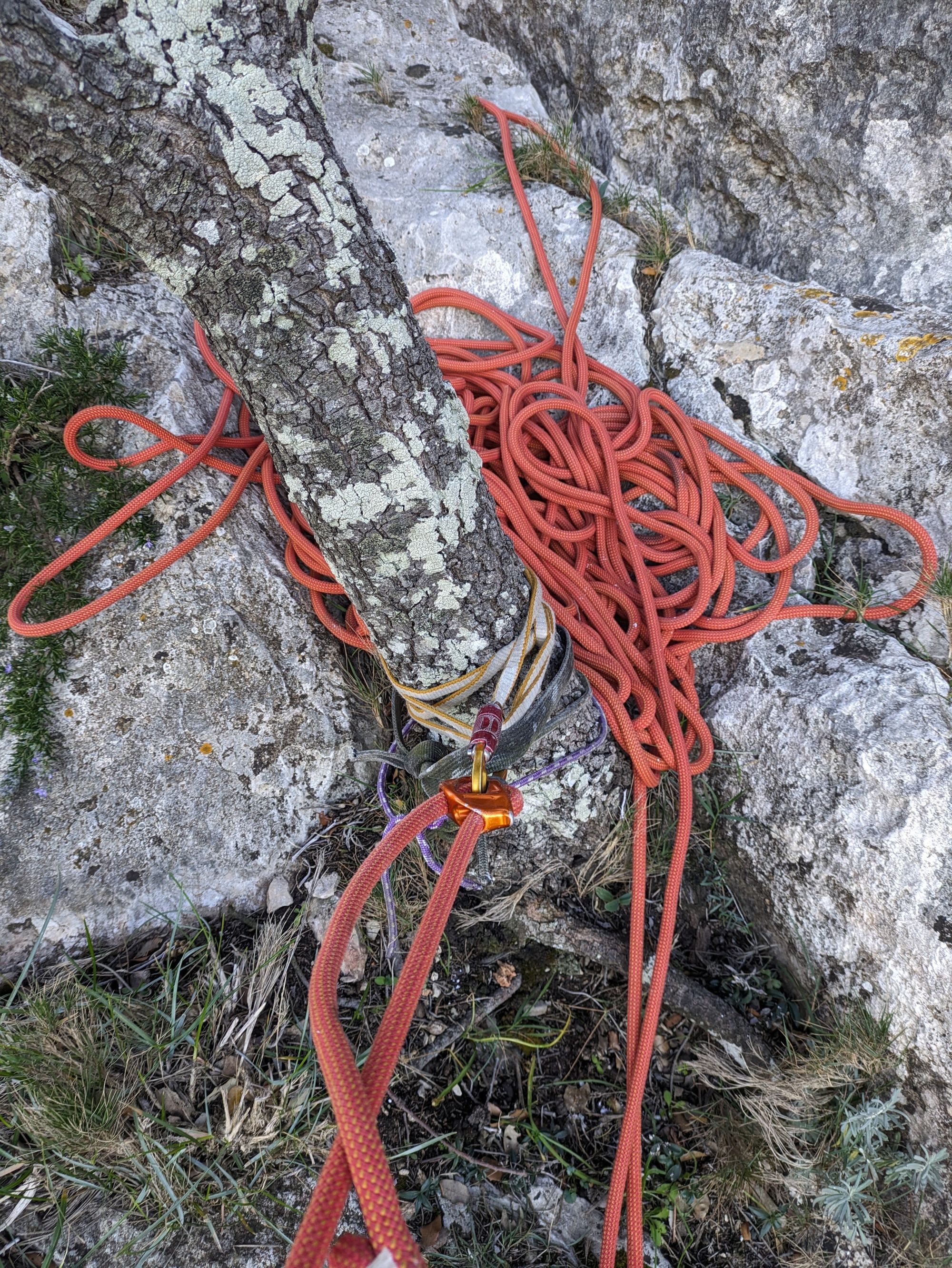
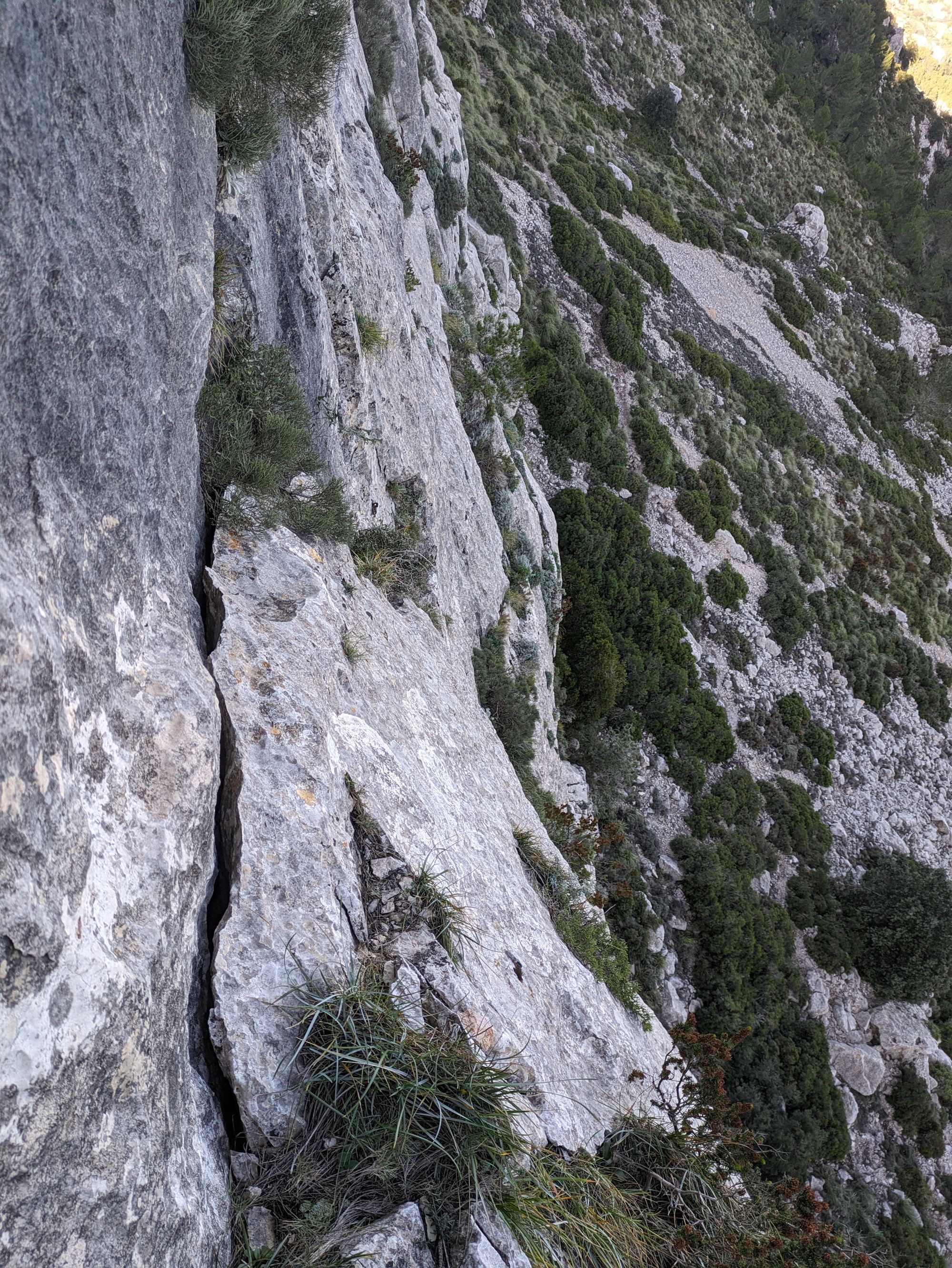
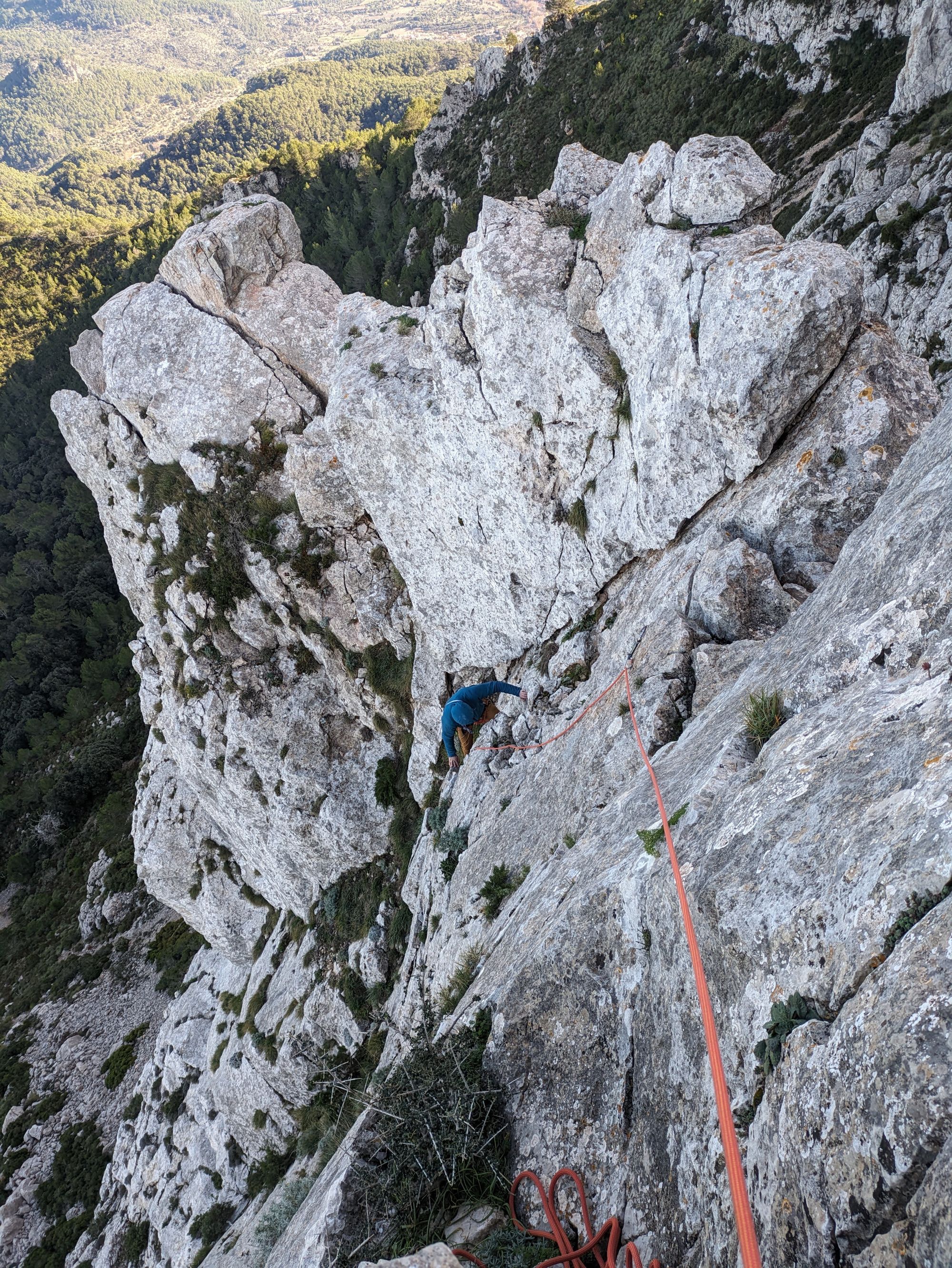
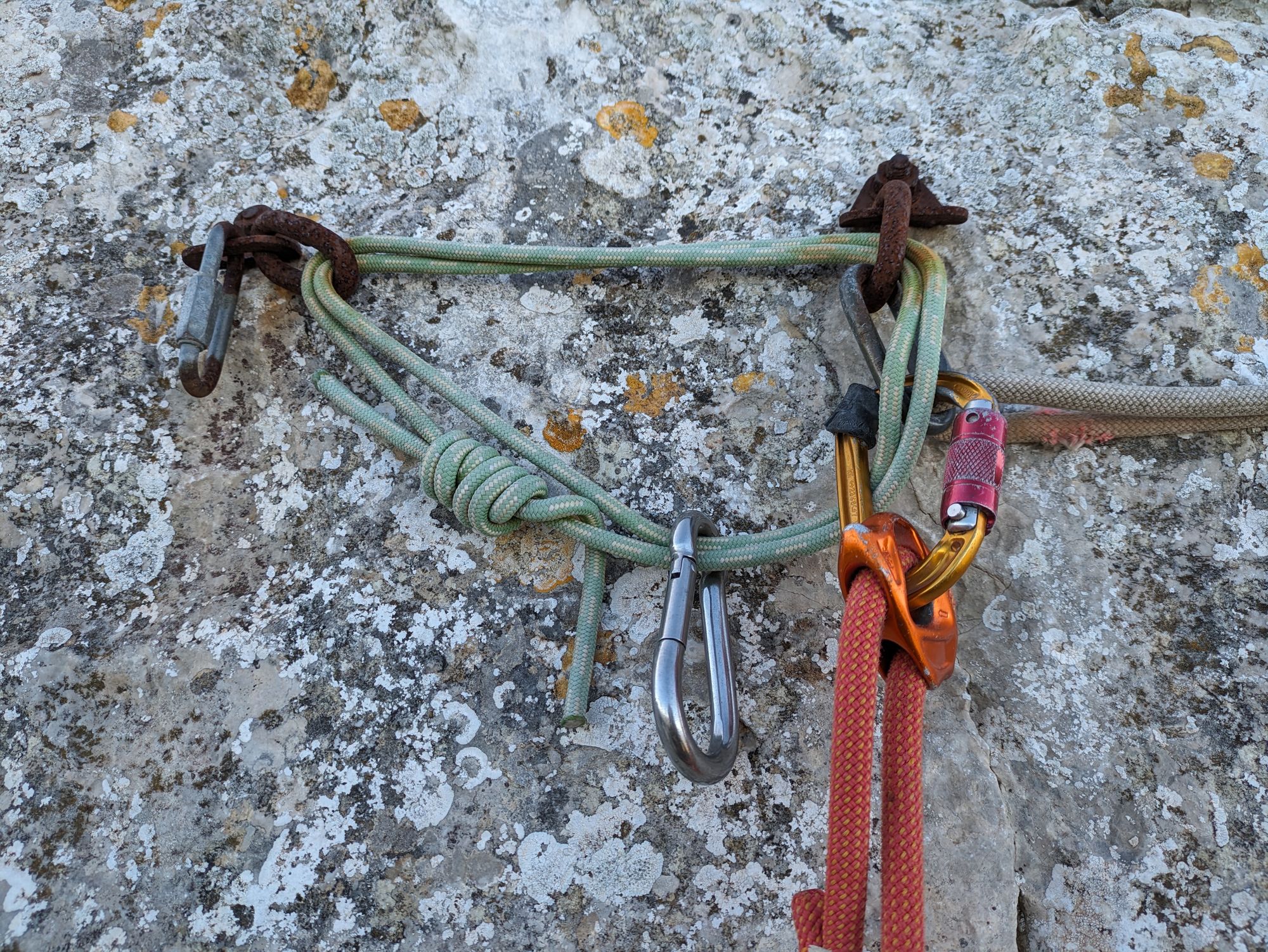
Variation after pitch 2 to second summit
Either move up the easy slab from the belay after pitch 2 and then traverse left under the second (eastern) summit or finish pitch 2 directly.
Straight up via a crack and loose blocks to a chimney at 5a. A few pitons along the way and posted belay on top.
Rappel off to the same belay station or downclimb and traverse to tag the main summit.
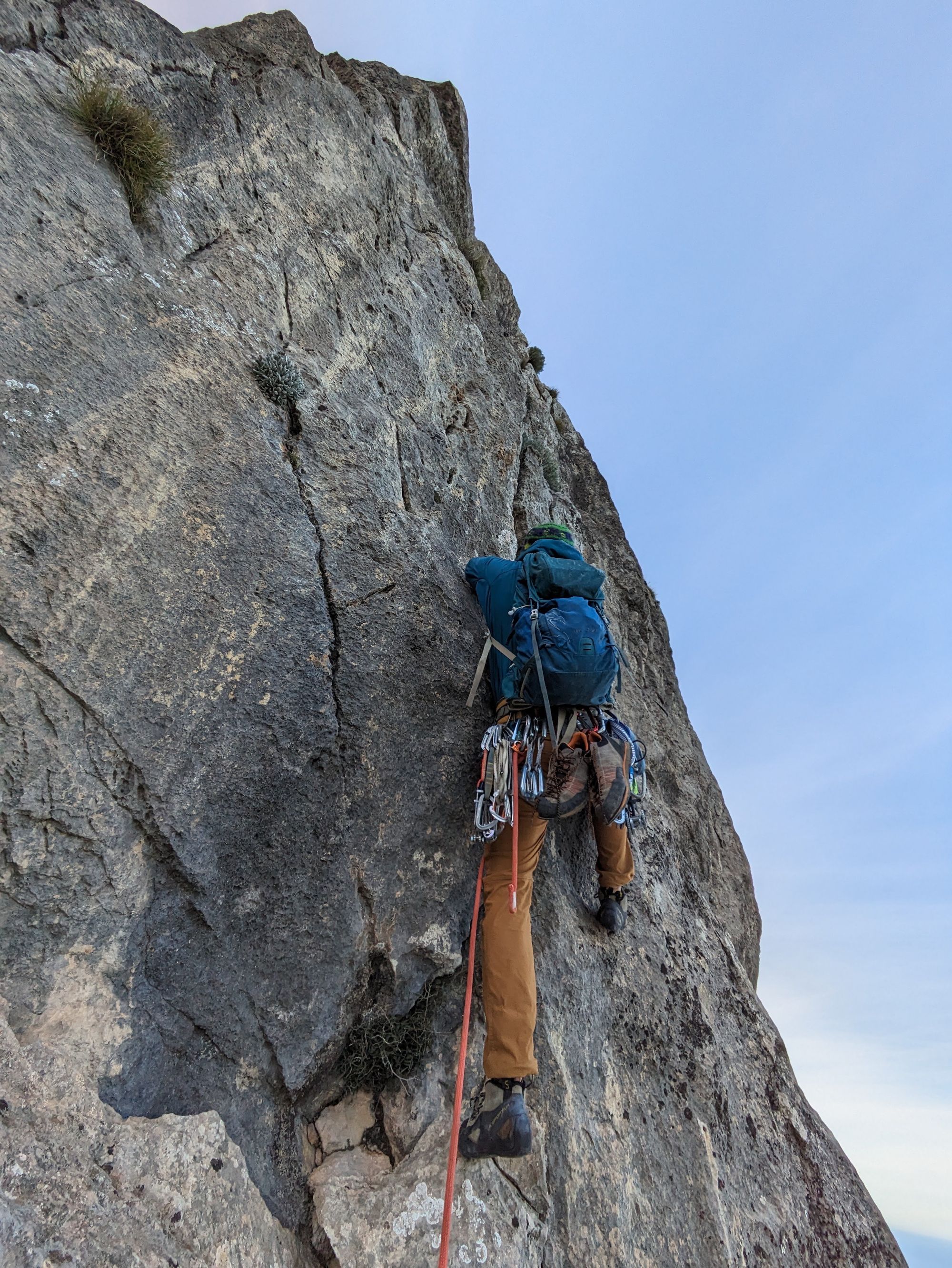
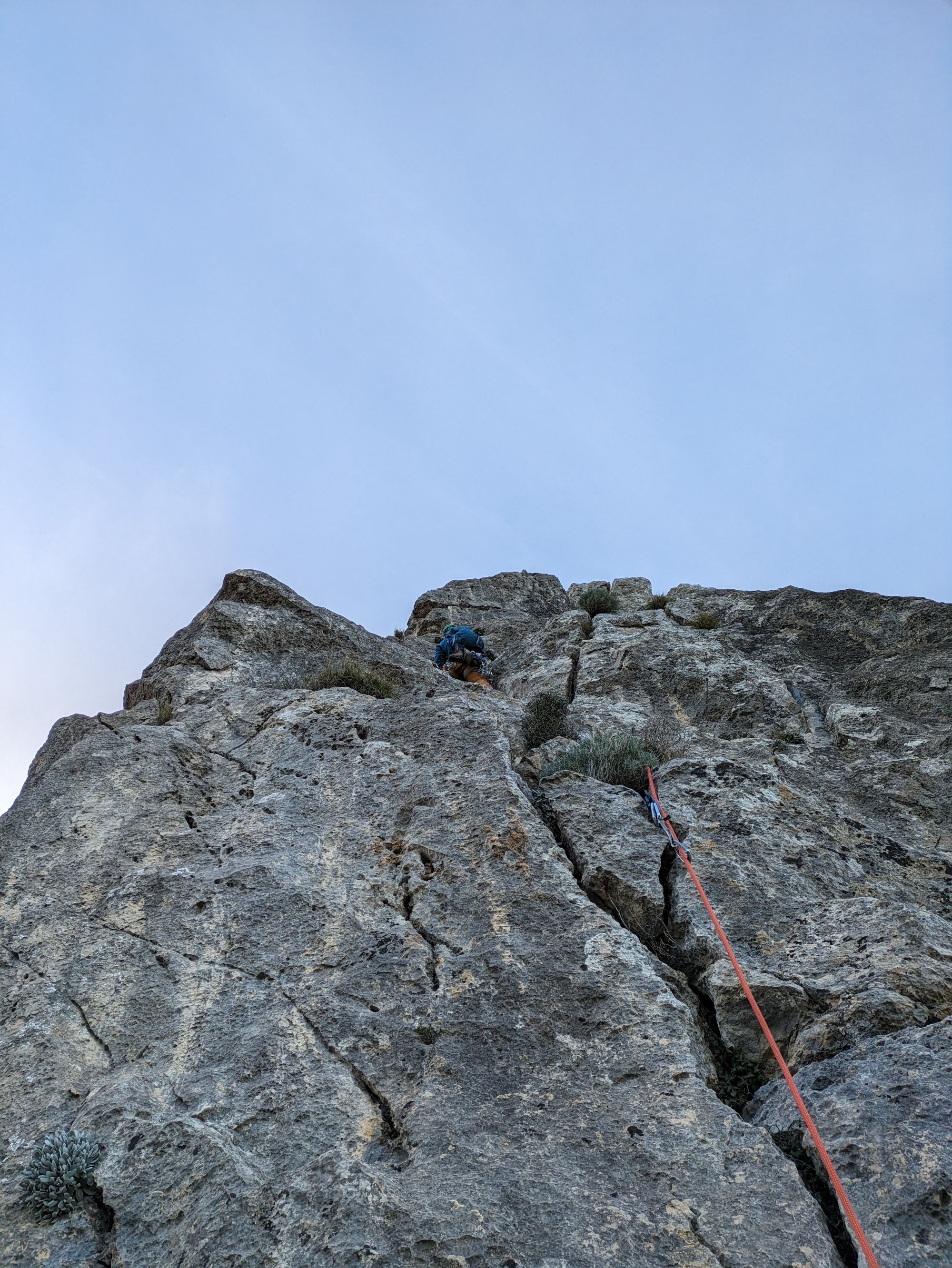
Routes in the east face
Two two pitch lines that share the middle and top belay can be found in the east face.
The right line is 5c (corner and wall) to the first belay (protected by pitons) followed by 6a+ free or 5c/A0 for the second pitch that follows the east arête (bolts and gear).
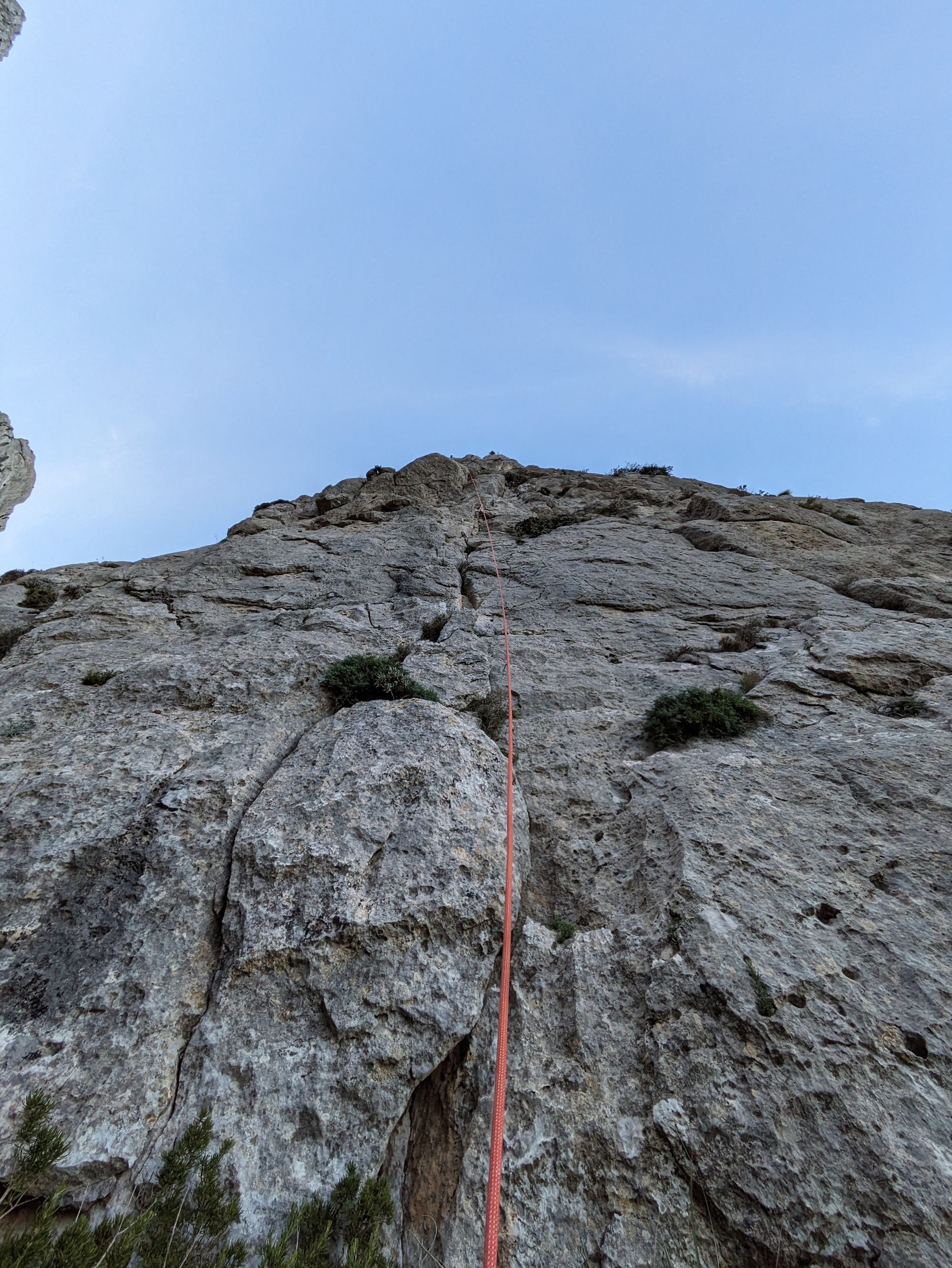
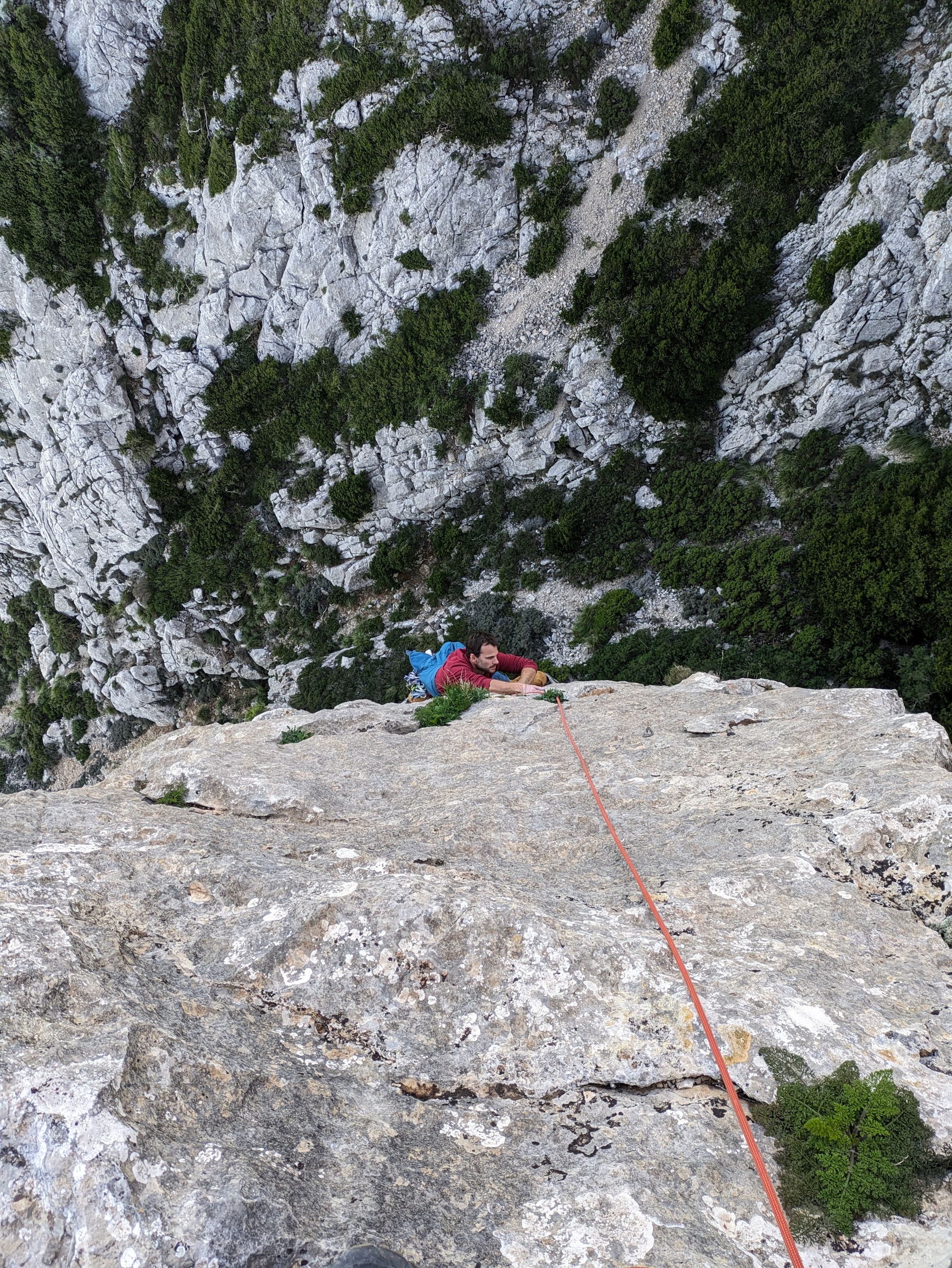
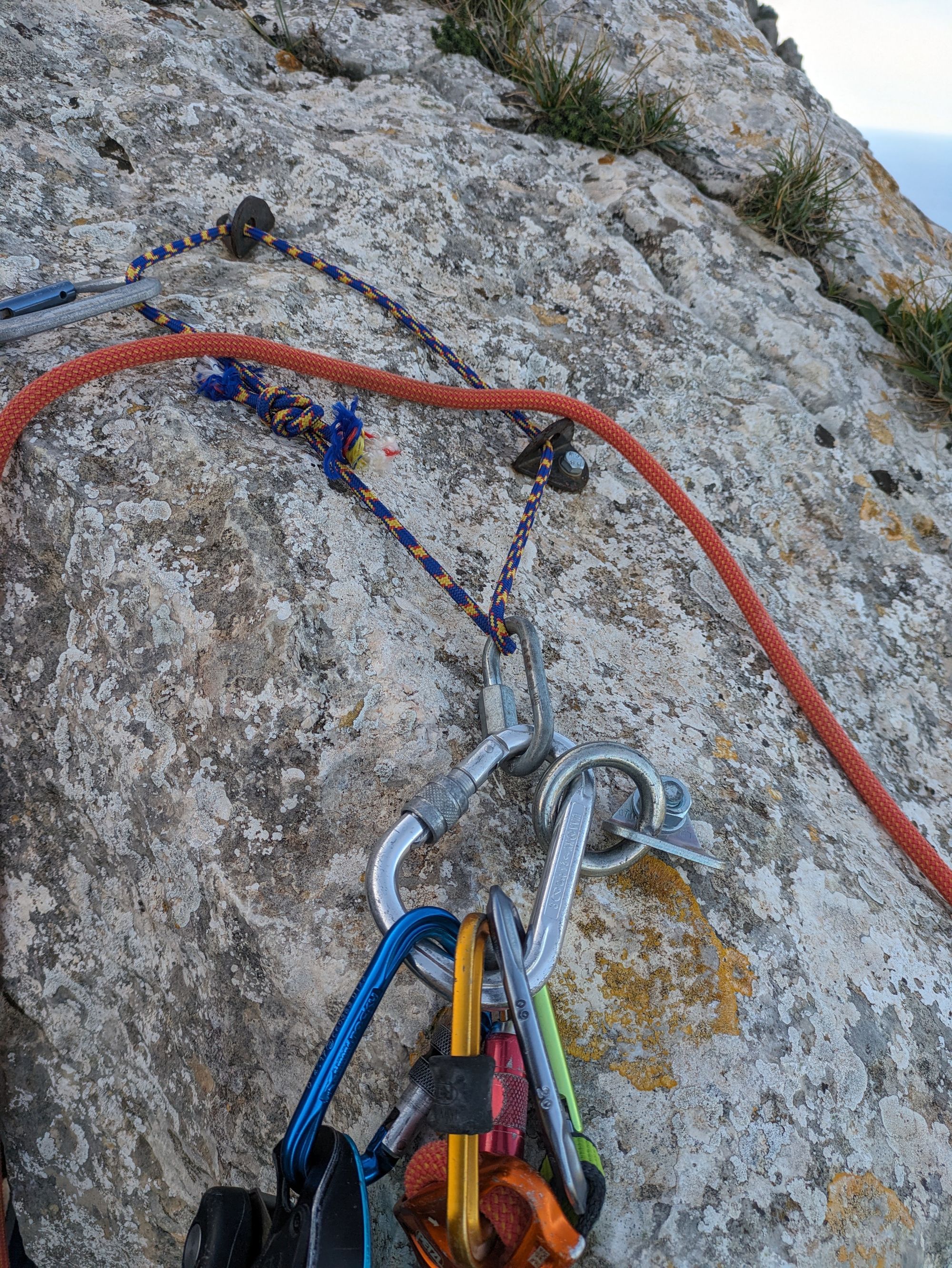
The left line is 6a+ for pitch 1 (unsecure slab to overhanging final) and 6b for pitch 2 (mainly wall climbing). Both protected by bolts.
The best way to access these routes is by rappelling the east face off the secondary summit in two rappels into the gully.
